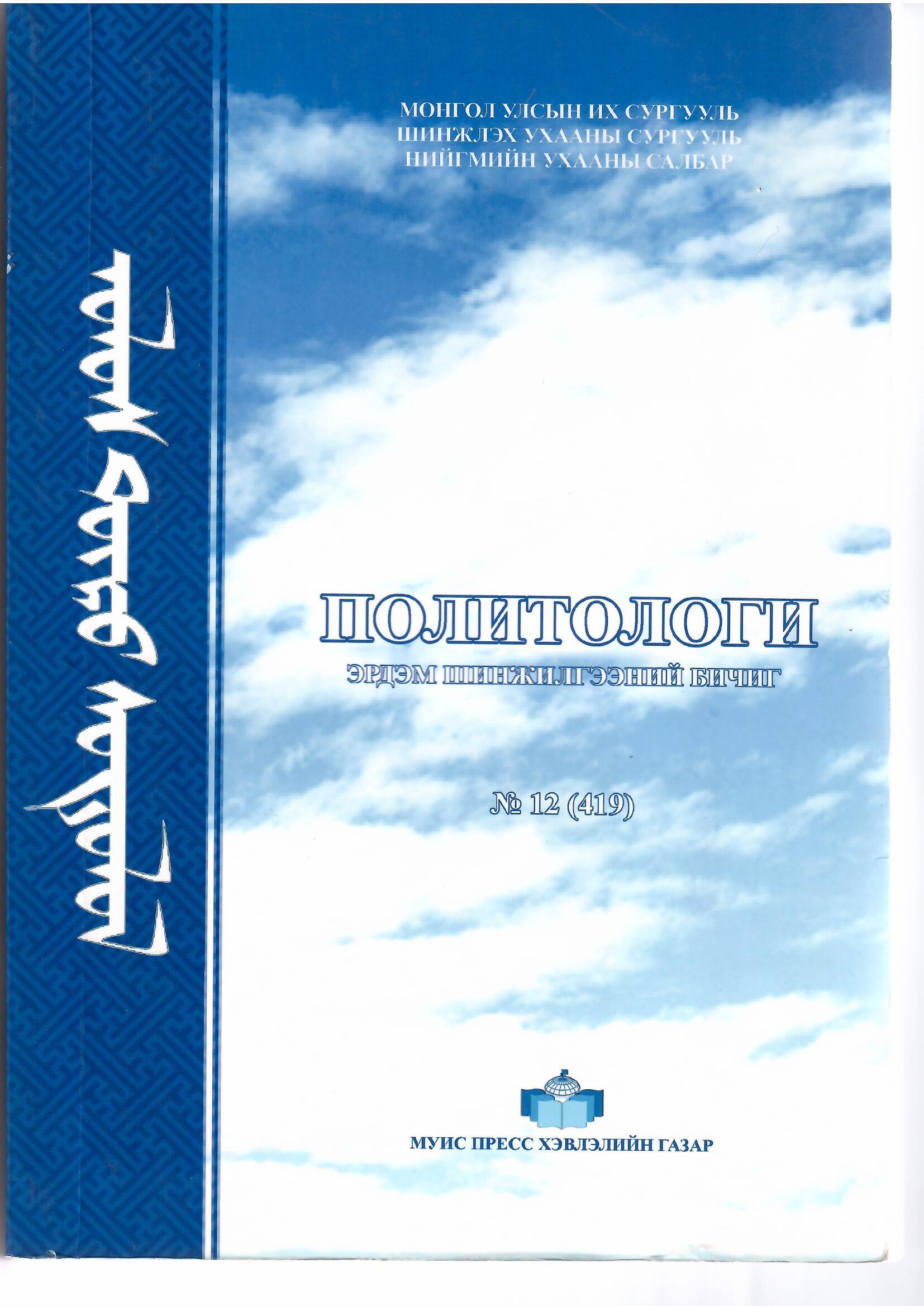ТӨВ АЗИЙН УЛС ОРНУУДЫН ЕРӨНХИЙЛӨГЧИЙН ЗАСАГЛАЛЫН ӨНӨӨГИЙН ТӨЛӨВ, ХАНДЛАГА Узбекстан. Туркменстан. Казахстаны жишээн дээр)
Keywords:
ерөнхийлөгч, парламентын засаглал, ерөнхийлөгчийн засаглал, ерөнхийлөгчийн тухай хууль, хориг тавих, вотум, томилгоо, удирдлага, аюулгүй байдал, эдийн засаг, сонгууль, парламентAbstract
Institutional design can impact the dynamics of power relations in Central Asian states. Majoritarianism and the rigidity of the fixed terms of presidential systems are amplified by the personalist regimes of Central Asia. often leading to instability. A parliamentary sy stem may reduce the political repression of these regimes by decreasing the stakes in each particular election. It may also increase stability due to the higher flexibility of the system. The effectiveness of the parliamentary system, however, depends largely on the existence of strong cohesive parties. The present day Central Asian States, namely, Uzbekistan, Turkmenistan, Kyrghistan. Tajikistan, and Kazakhstan, came into being after the October revolution in 1917. They owe their existence to the Soviet nationality policy. Looked at from this perspective, they have, indeed, a short history as independent. separate nations. However, they share a host of common specifics, which include a common Turkic ethnicity, a Common Muslim Cultural tradition and language. a similarity of history, predominance of rural population, low socio- economic mobility, low level of technical skills and qualifications. Tajiks like to project their somewhat different identity in terms of Persian language, which was, in fact, the language of local rulers and elite before the advent of Turks and their language in Central Asia. The apparent homogeneity is, however, quite deceptive. There exists a large diversity, which is articulated in many significant ways. For example. Uzbeks, who constitute the largest national group of over 17 million people. take pride in projecting their ethnic/ national identity not entirely ems of religious (sunni) or linguistic (Turkic) bonds, but primarily in terms of superior urban civilization which had developed by the side of Amu-Darya and Syr-Darya. Tajiks also consider themselves as sedentary. As against this. Turkmens and Kyrghiz are basically nomadic. Therefore. their geo-cultural identity is restricted. political regimes of the Central Asian states. Uzbekistan cannot be likened to Kyrgyzstan in terms of the democracy index because the latter does not have a consolidated autocracy. The two regimes are similar because of their low IPI, which threatens their stability; in fact, this means the potentially low stability of their political regimes because governance is personalized. These regimes can be described as a constitutional because their presidents do not rely on any party and do not regard political parties as an important instrument of their political domination, which might undermine the regime. In these states, the president's powers are regularly revised, largely by amending the Constitution and using other methods.




